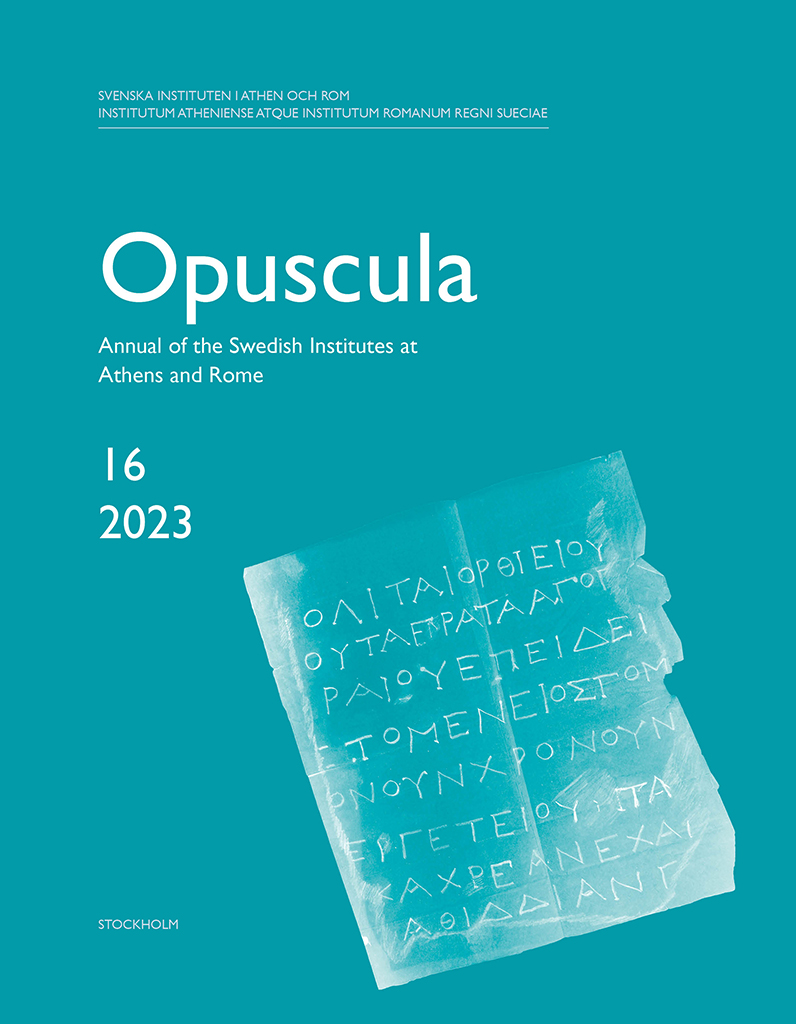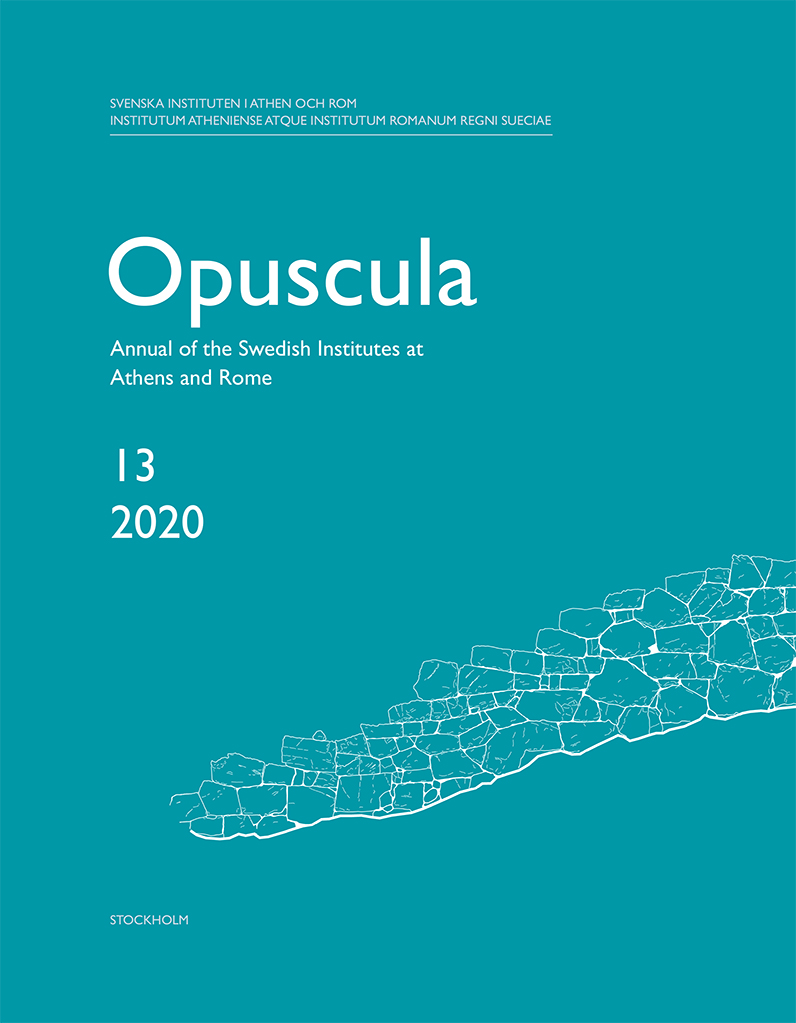Opuscula is published by the Swedish Institutes at Athens and Rome, with the aid of a grant from the Swedish Research Council. Distributed by Eddy.se AB. View journal at ERIH PLUS. All content available with open access. New Greek inscriptions from Akmoneia and its territory By Hüseyin Uzunoğlu & N. Eda Akyürek Şahin Abstract This paper publishes nine new inscriptions copied during the archaeological surveys conducted in the Phrygian city of Akmoneia and in its territory between 2014 and 2017. Even though there have been no systematic excavations to date, the city is remarkable due to its rich epigraphic documentation. The new finds make a notable contribution to this. Of the nine inscriptions published here, one (No. 1) concerns the erection of the statues of Koros, the goddesses, as well as of the sacred council, by a certain Hierokles, the priest and the agonothete of the Great Asklepieia. In another inscription (No. 2), a woman called Flavia Hedeia, the daughter of Flavius Montanus of consular rank and the wife of Sallius Aristainetos of consular rank, is honoured by her foster-parents. We attempt to identify Flavius Montanus through some related inscriptions already published from the city and thereby propose a dating in the…
Opuscula is published by the Swedish Institutes at Athens and Rome, with the aid of a grant from the Swedish Research Council. Distributed by Eddy.se AB. View journal at ERIH PLUS. All content available with open access. Religion and family politics in Hellenistic Kalaureia. Three new inscriptions from the sanctuary of Poseidon By Nikolaos Papazarkadas (University of California, Berkeley, USA) & Jenny Wallensten (Swedish Institute at Athens, Greece) Abstract This article presents three unpublished Hellenistic inscriptions from the sanctuary of Poseidon in Kalaureia (modern Poros): two found during archaeological excavations on the site and one recorded in a letter that was once part of Ioannis Kapodistrias’ official correspondence. All three inscriptions were dedicatory and carved on bases supporting portrait statues. Interestingly, they were offered to Poseidon by members of a single family already known from other documents in the Kalaureian epigraphic corpus. Remarkably, eight out of the 18 inscriptions discovered in Kalaureia make repeated references to men and women of this very family, which appears to have materially dominated Poseidon’s temenos and its environs during the 3rd and 2nd centuries BC through the careful placement of portraits of its members. Most of these statues were conspicuously placed by the entrance…


